Last summer I travelled by train from Salzburg in Austria through Germany back home to Wales, hoping to practise my German whilst soaking in some German culture, sun and food. Keen to squeeze in a slightly smaller city, I arrived in Ingolstadt – an hour ride from Munich – on a hot summer’s day with my huge backpack weighing me down.
I jumped on the bus from the train station into the city centre and sat down at the first cafe I found. I was already struck by the beautiful Bavarian town surrounding me. Long gone was the hustle and bustle of the city and instead historic buildings dotted quaint, cobbled streets.
Ingolstadt had made it onto the itinerary for my trip mainly because of my love for Mary Shelley’s Frankenstein; about a third of the novel takes place in the city. The story’s tale of transgression, science and humanity had captured my imagination and I felt like I was stepping into the darkness of the novel as I took in the gothic architecture of the Liebfrauenmünster (Ingolstadt's largest church) in the centre of the old town.
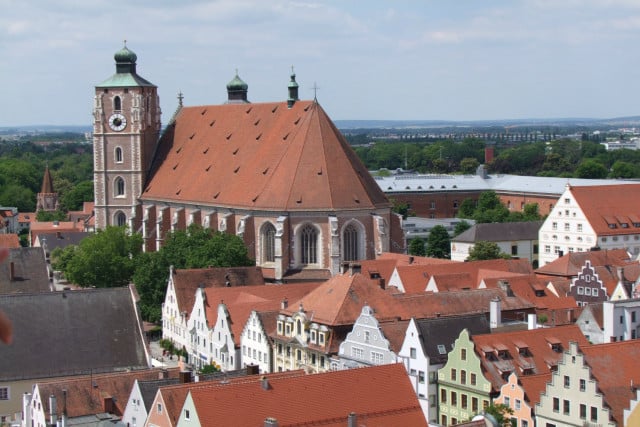
The red roofs of Ingolstadt and the Liebfrauenmünster from above. Photo: depositphotos/kaschwei
Finding Frankenstein in the Old City Centre
Near the church I found the Kreuztor, a gothic red brick city gate dating back to 1385. But as I continued to wander around the Altstadt it didn’t strike me as the perfect setting for Shelley’s tale; the colourful baroque houses seemed more suited to a fairytale than to the well known gothic novel, where a young scientist animates human remains to create a creature set on destroying its maker.
I recognised the tall tower of the Moritzkirche as the ‘high white steeple’ which Victor Frankenstein remarks on when he arrives in the city for the first time and saw the Alte Anatomie of Ingolstadt University. Here, students like Victor Frankenstein carried out their medical experiments (they used dead pigs rather than the human corpses which Frankenstein prefers in the novel).
The building is now the German Medical History museum and there is no lack of gory exhibits and intimidating medical instruments.
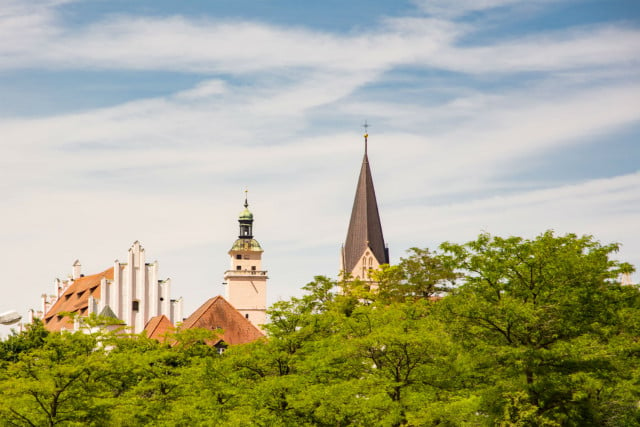
The spires of Ingolstadt, as mentioned by Victor in Mary Shelley's Frankenstein. Photo: depositphotos/anfredxy2
Discovering the Danube
I wandered along the banks of the Danube, crossing over the river to see the city’s two fortresses. One, the Turm Triva, hosts the Bavarian Police Museum and the other, the Reduit Tilly, part of the Bavarian Army Museum focusing on the history of World War One and post-World War One Germany; both were built for King Ludwig I of Bavaria in the mid 17th Century.
It was however the Neues Schloss back on the Altstadt side of the river which particularly struck me. The white 15th Century castle was built for Duke Ludwig the Bearded in 1418 with three metre thick walls, Gothic net vaulting and individually carved doorways. Interestingly, the future French President Charles de Gaulle was held in the castle as a prisoner of war during the First World War.
It seemed like something straight out of a fairy-tale and not only could I imagine Rapunzel’s golden locks flowing down the side of the tower, but I could also see Victor Frankenstein in its shadow. Here was where my fairy-tale image of the city and Shelley’s Ingolstadt converged. Simultaneously I saw both the perfect Bavarian town and the potential dark the city’s Gothic architecture
Of course, Frankenstein never actually existed. but he and his creature were ever-present in my mind during my visit to the city. In fact, my preoccupation almost barred me from learning about the intrigue of the true history of Ingolstadt. Shelley’s choice of Ingolstadt as a setting was perhaps more to do with its association with the Illuminati than with a good university medical school.
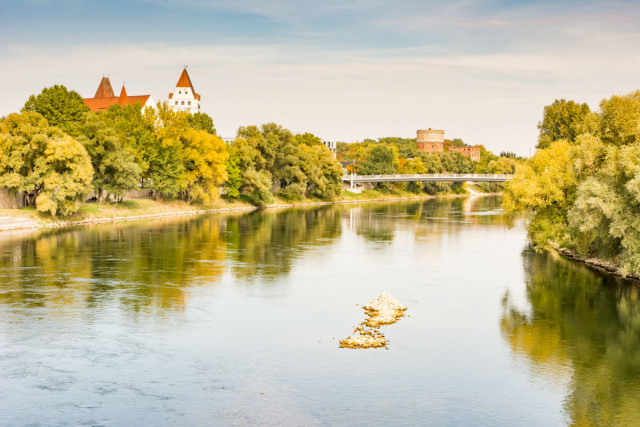
A view of the Neues Schloss from the Danube river. Photo: depositphotos/manfredxy
The birth of the Illuminati
Yes, it sounds far fetched, but Ingolstadt is in fact the birthplace of the Illuminati. In 1776 Adam Weishaupt, a professor of law at the University of Ingolstadt, founded the Order of the Illuminati in the city. It was a secret organisation formed to oppose religious influence on society and the abuse of power by the state.
SEE ALSO: How the Illuminati society really did start in Germany
The Bavarian Illuminati was officially disbanded just 10 years after it had been set up, but it is still considered to have been an important Enlightenment force and many believe not only that they continued to exist, but that they were the intellectual fathers of the French Revolution. Scholars have seen the connection between Ingolstadt and the Illuminati as what which led Mary Shelley to set her novel about the limits of humanity in the city.
After learning this, I walked around the streets of Ingolstadt with even more intrigue. I stood looking at the pale blue building on Theresienstrasse, Weishaupt’s former home, wondering if the plaque marking it as a late 18th Century Illuminati meeting place was actually signalling that Ingolstadt's picture-postcard Bavarian streets were hiding bigger secrets than the tale of Victor Frankenstein. Maybe if you visit the city, you’ll find out.



 The pickle harvest in Kasel-Golzig in the Spreewald on July 17th. Photo: DPA
The pickle harvest in Kasel-Golzig in the Spreewald on July 17th. Photo: DPA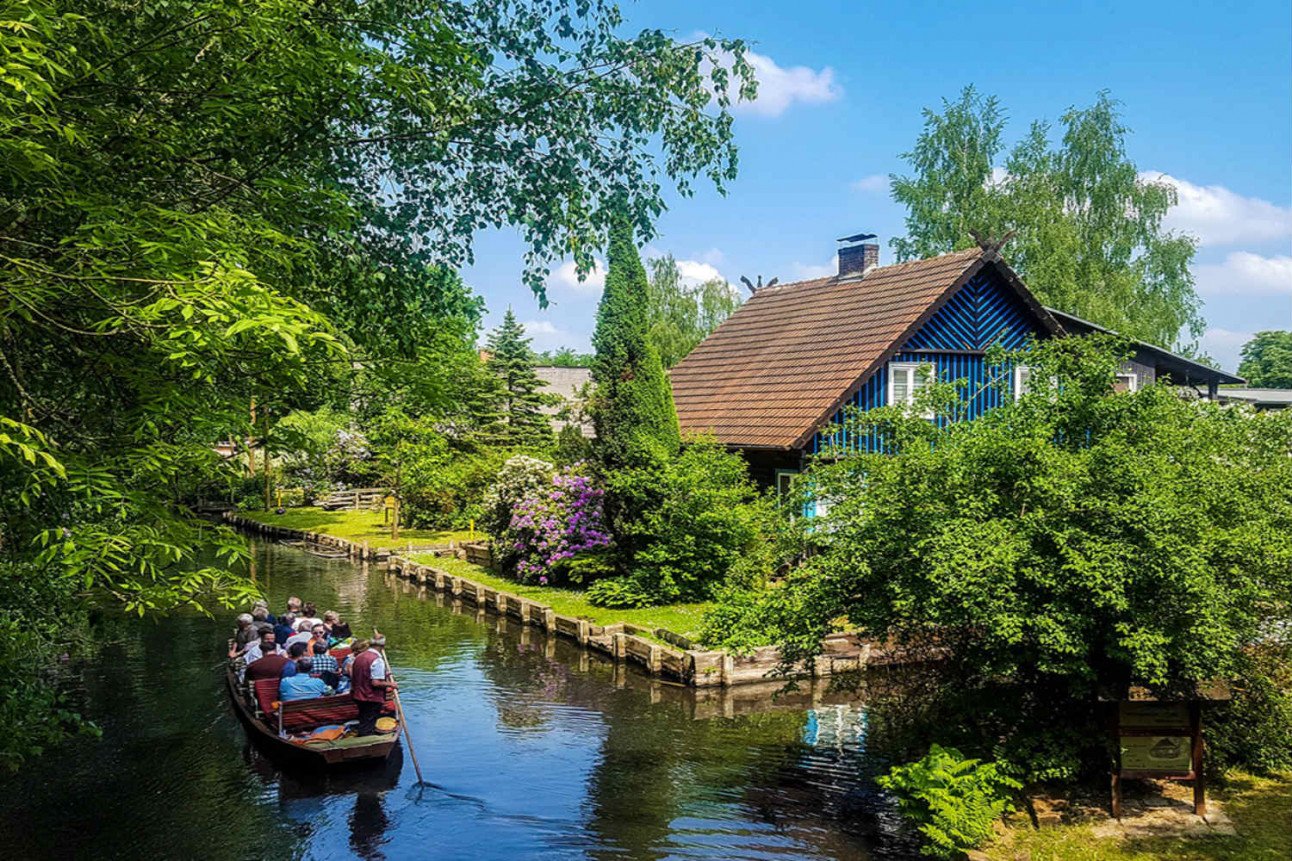
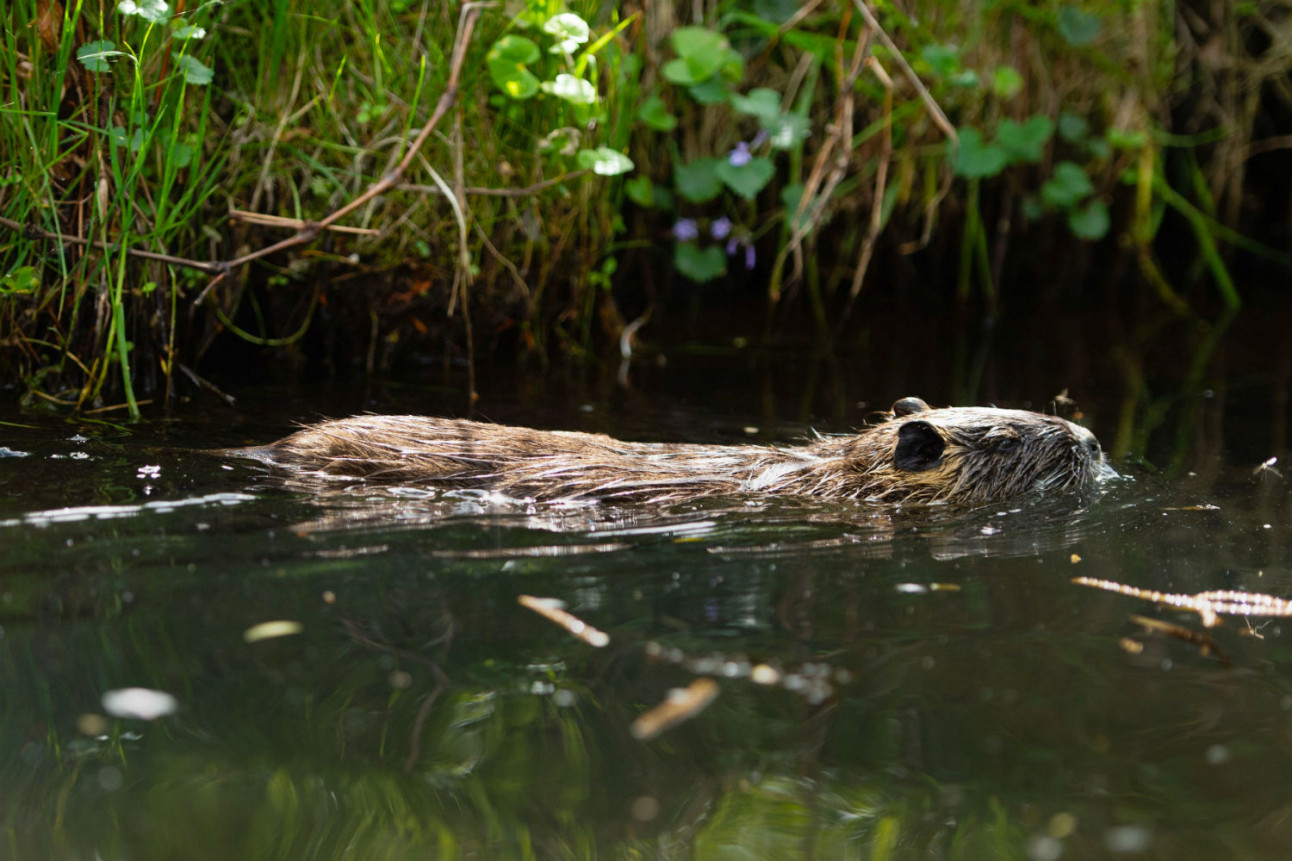
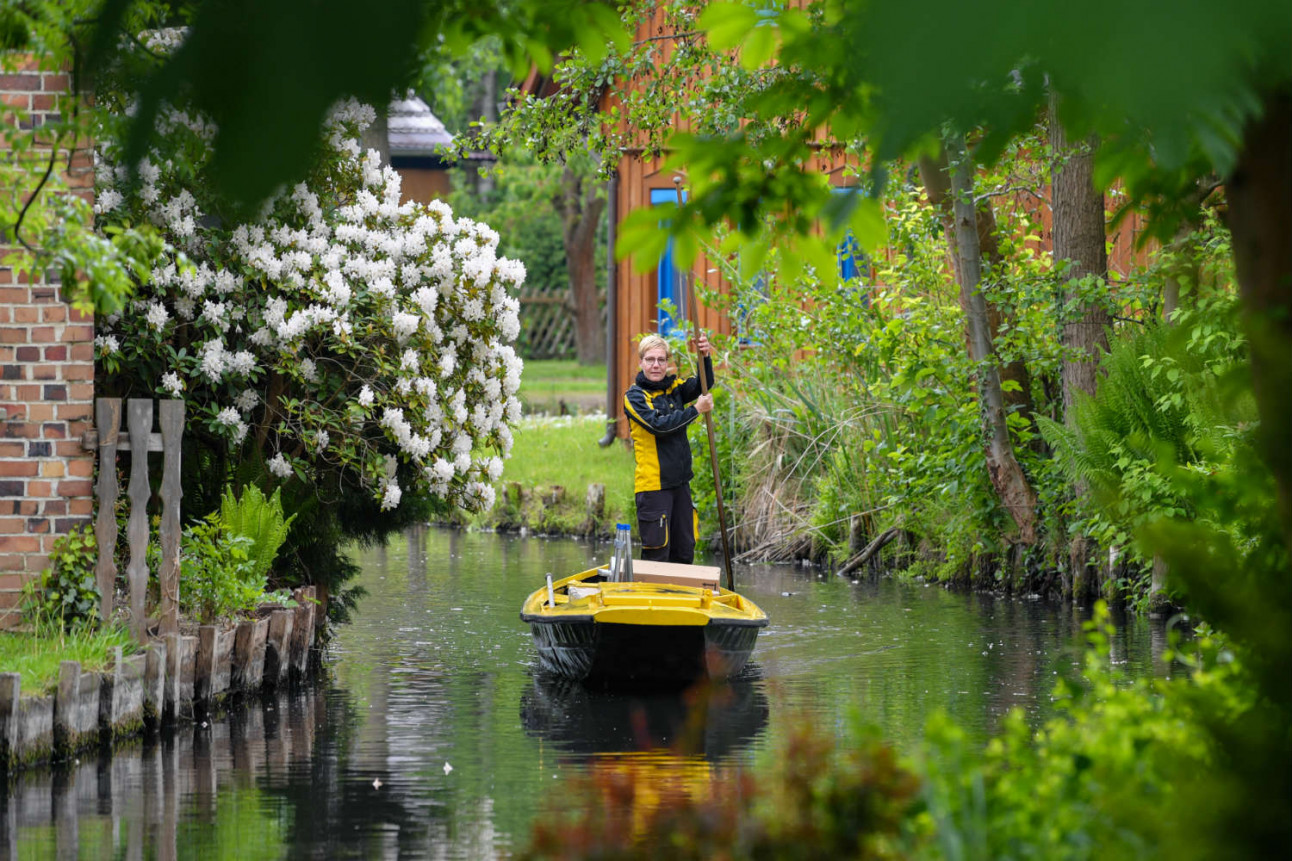
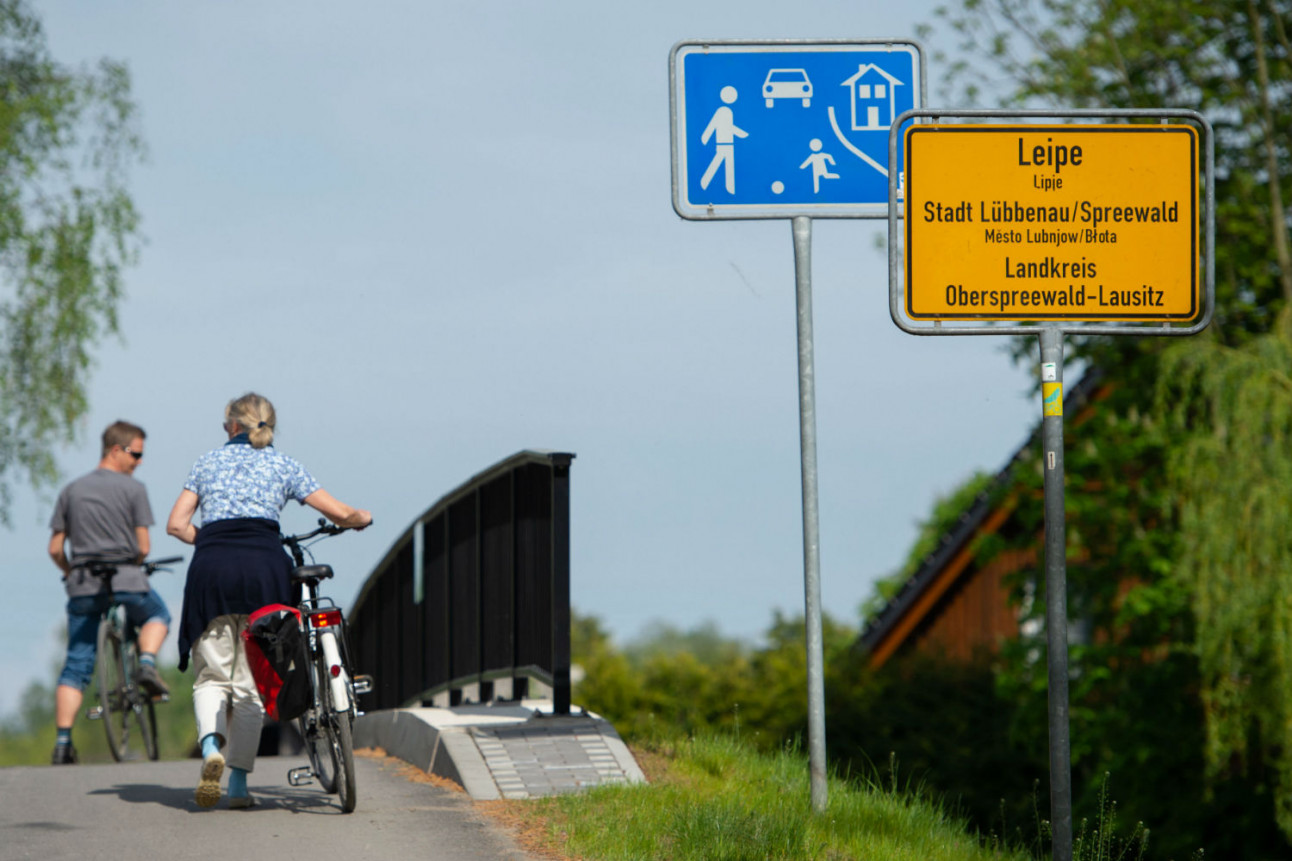
 Please whitelist us to continue reading.
Please whitelist us to continue reading.
Member comments